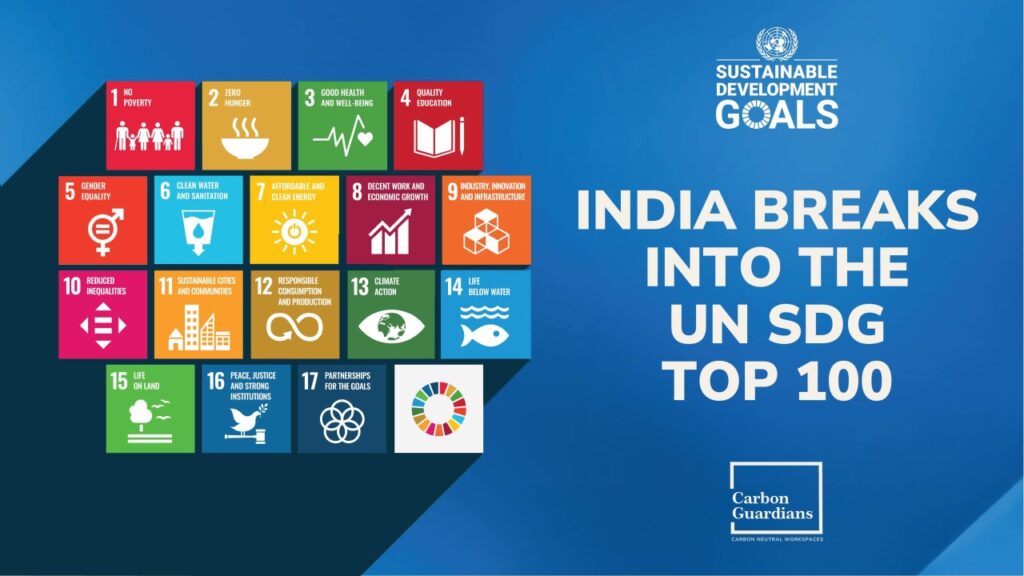
The SDG countdown has begun and real estate needs to lead this transformation.
India’s entry into the UN SDG Global Top 100 is not merely a milestone, rather it is a mirror. A reflection of intent, of investment, of policy meeting progress.
But beyond the headline lies a far more urgent question: Can our built environment sustain the pace and ambition of India’s development story?
At Carbon Guardians, this question defines our everyday reality. As sustainability partners to forward-thinking businesses and real estate developers, we operate at the intersection of climate strategy, infrastructure resilience, and workspace transformation.
We are not surprised by India’s rise in the SDG Index which is the result of serious groundwork. Renewable energy capacity has crossed 200 GW. Over 250 million people have exited multidimensional poverty. Access to education and healthcare is improving and these are undeniable markers of national intent.
Yet, even as we acknowledge this progress, we must also confront a gap that continues to widen – the gulf between how India is growing and how sustainably its growth is being housed.
Buildings account for nearly 40% of global carbon emissions, and in India, the sheer scale of construction, retrofitting, and urban expansion places enormous pressure on natural resources, public infrastructure, and indoor environmental health. In most cities, commercial buildings are being developed at a speed that rarely allows for circularity, long-term thinking, or human-centric design. In many cases, sustainability enters the conversation too late – once the form is fixed, once the systems are chosen, once the project is already in motion.
This is where the real shift must happen, not in how we report our achievements, but in how we embed sustainability into the decision-making processes that shape every square foot of urban India. We need more than green certifications; we need buildings that perform intelligently over time, adapt to changing climate patterns, and support the health and productivity of the people who occupy them.
At Carbon Guardians, we do not chase sustainability as a trend or tick-box. We approach it as a systemic opportunity to reduce risk, increase resilience, and align space design with business outcomes. Whether it is calculating embodied carbon before a single brick is laid, guiding a client toward low-carbon material procurement, or engineering biophilic workspaces that improve indoor air quality and employee wellbeing, our goal is to make sustainability operational, measurable, and deeply tied to the future-readiness of the business.
India’s SDG progress is commendable, but if we are to move meaningfully towards the 2030 targets, the built environment cannot remain reactive. It must evolve into a proactive force, anticipating regulatory shifts, preempting resource stress, and prioritizing people and the planet in equal measure. This evolution demands new ways of thinking: developers must measure success not by occupancy rates alone but by lifecycle emissions and adaptive potential; corporate occupiers must look beyond energy bills and examine the carbon handprint of every space they use; architects and planners must design not only for scale and aesthetics, but for circularity, modularity, and contextual sustainability.
The next phase of India’s development journey will not be defined by how fast we grow, but by how responsibly we build. A net-zero future is no longer theoretical as it is fast becoming an expectation, both from investors and from regulators.
We are proud to contribute to India’s SDG story, not as passive observers, but as active enablers of a healthier, more intelligent built environment. Because if India is rising on the global index, its offices, factories, schools, and cities must rise with it, not in height or volume, but in conscience, efficiency, and impact.